Abstract
A close relationship between the four human treponematoses is suggested by their clinical and epidemiological characteristics and by such limited knowledge of the treponemes as there is at present. No treponeme of this group (except for that of the rabbit) is known other than in man, but the human treponemes probably arose long ago from an animal infection. The long period of infectiousness of pinta suggests that it may have been the earliest human treponematosis. It may have been spread throughout the world by about 15 000 B.C., being subsequently isolated in the Americas when the Bering Strait was flooded. About 10 000 B.C. in the Afro-Asian land mass environmental conditions might have favoured treponeme mutants leading to yaws; from these, about 7000 B.C., endemic syphilis perhaps developed, to give rise to venereal syphilis about 3000 B.C. in south-west Asia as big cities developed there. Towards the end of the fifteenth century A.D. a further mutation may have resulted in a more severe venereal syphilis in Europe which, with European exploration and geographical expansion, was subsequently carried throughout the then treponemally uncommitted world. These suggestions find some tentative support in climatic changes which might have influenced the selection of those treponemes which still survive in humid or arid climates. Venereal transmission would presumably remove the treponeme from the direct influence of climate. The author makes a plea for further investigation of many aspects of this subject while this is still possible.
Full text
PDF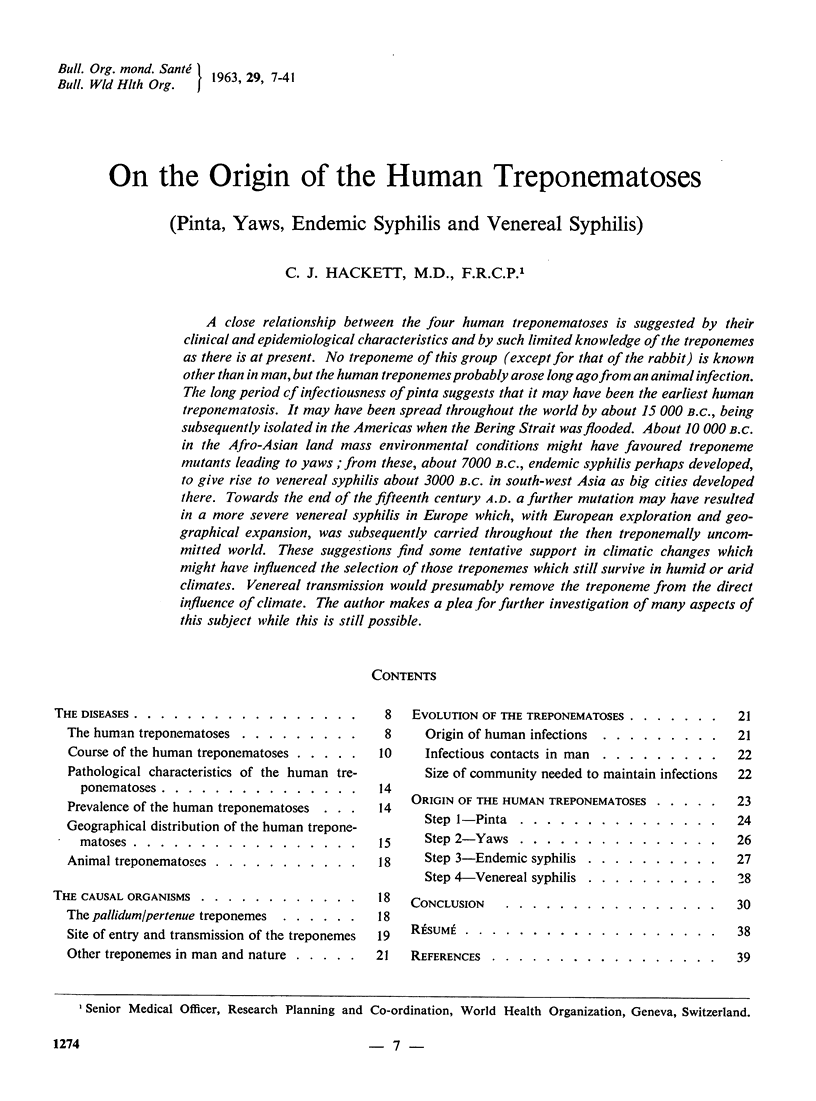
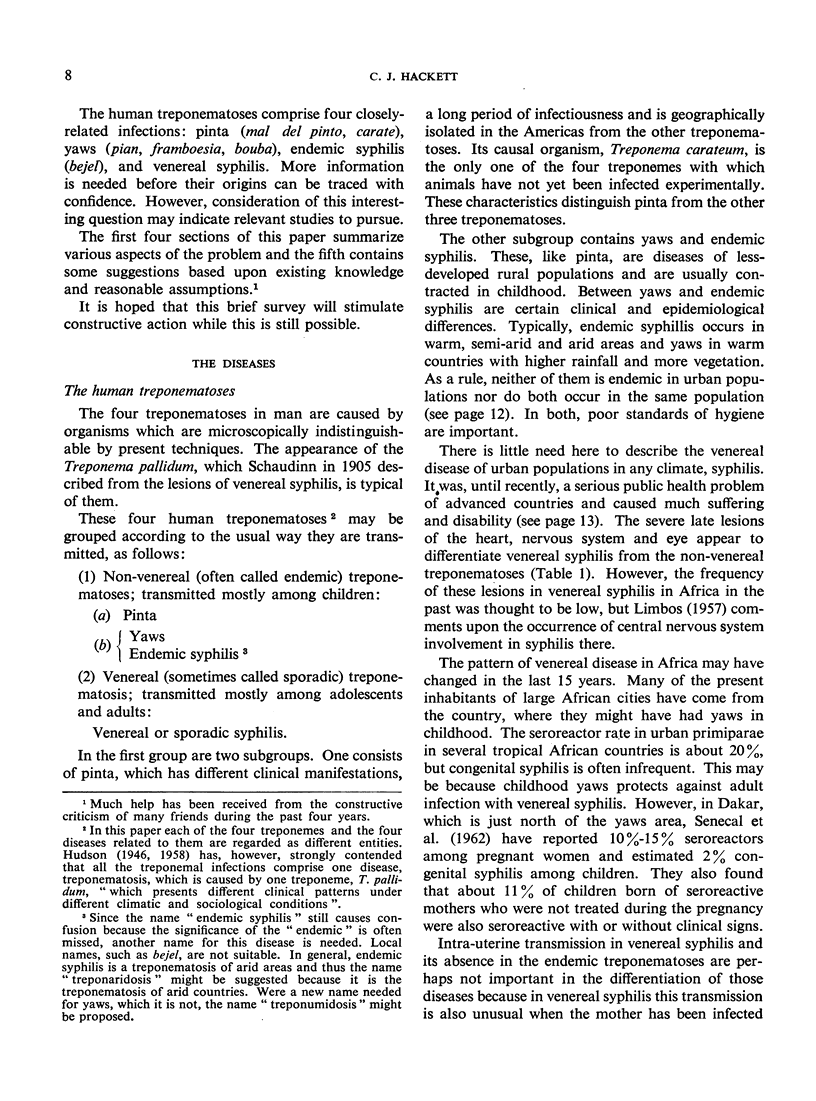




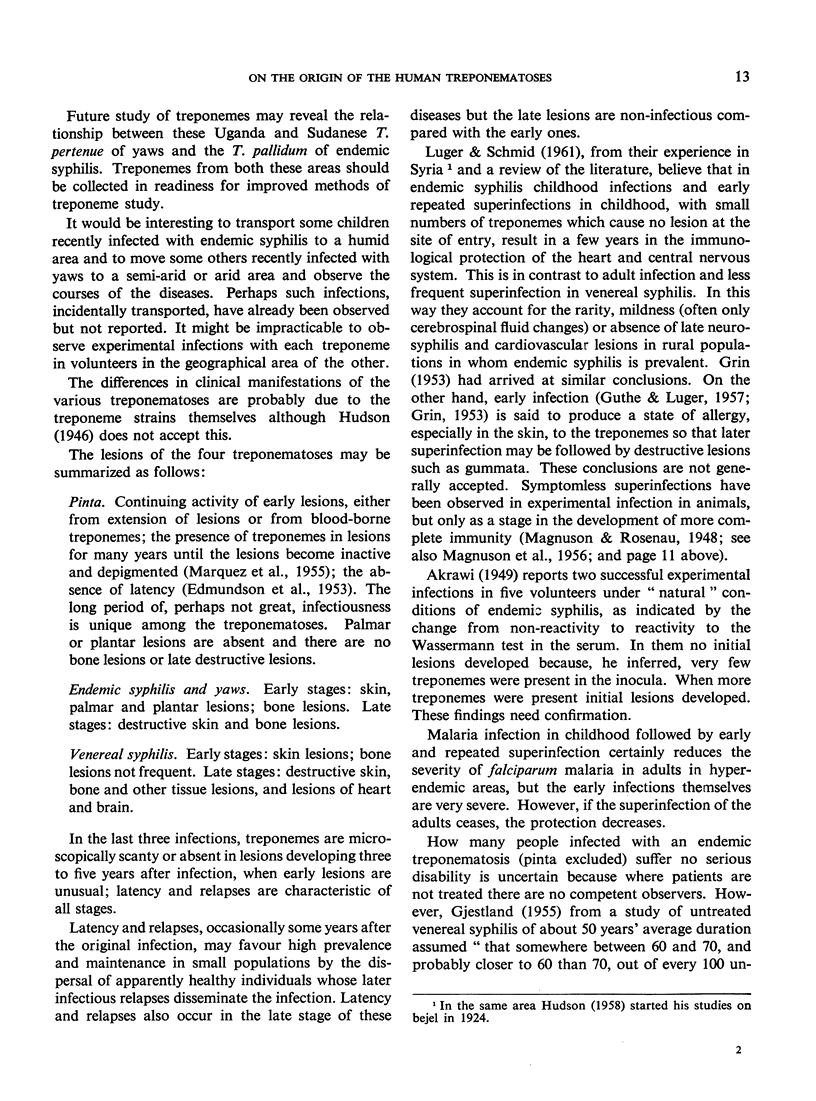

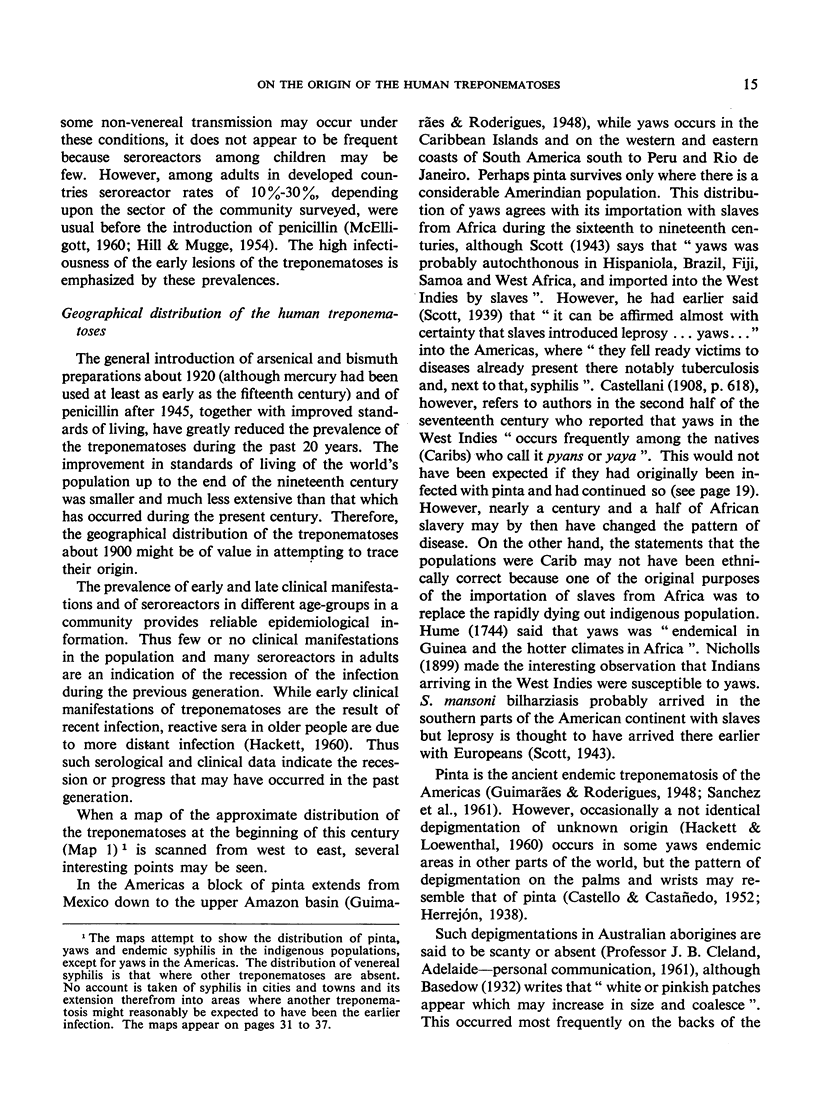



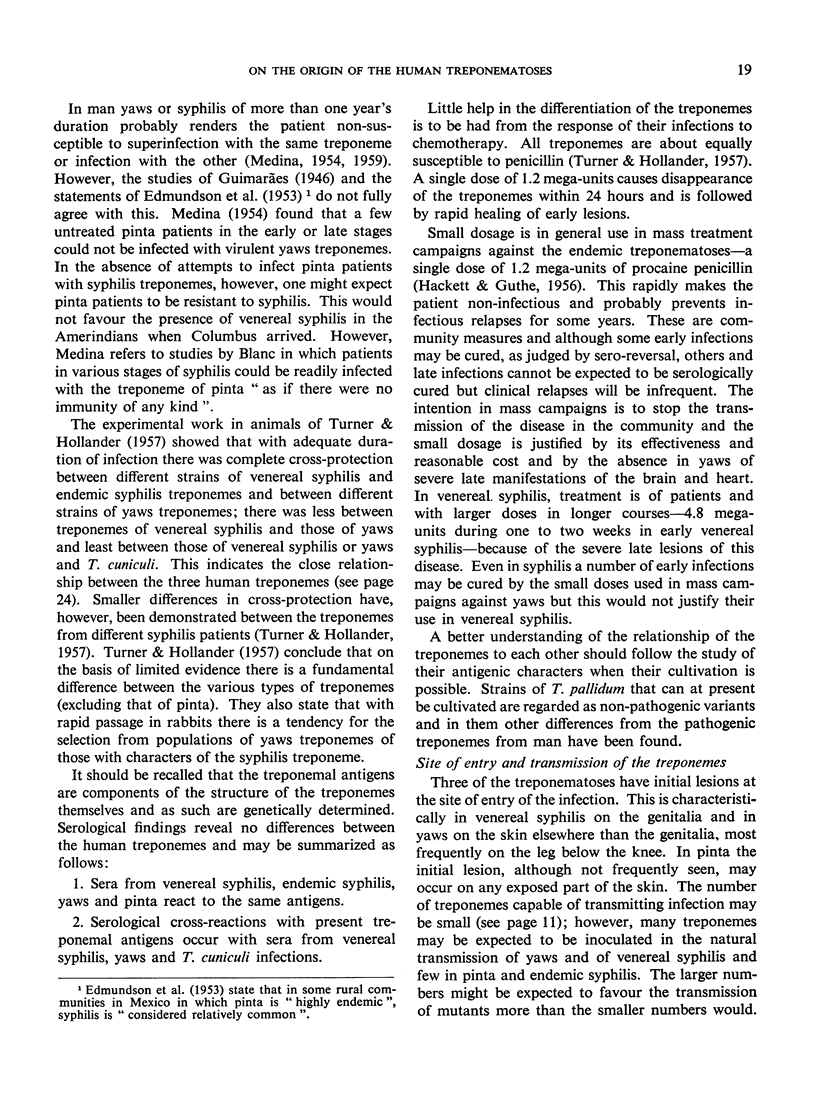


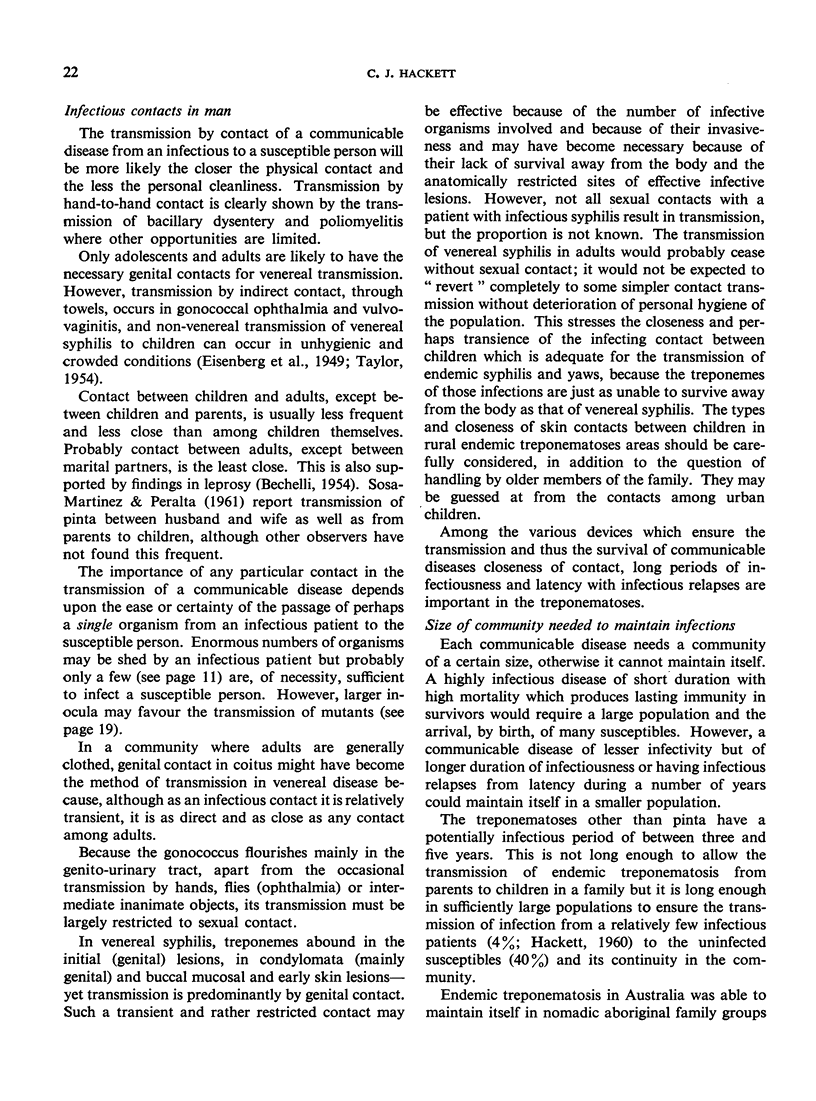






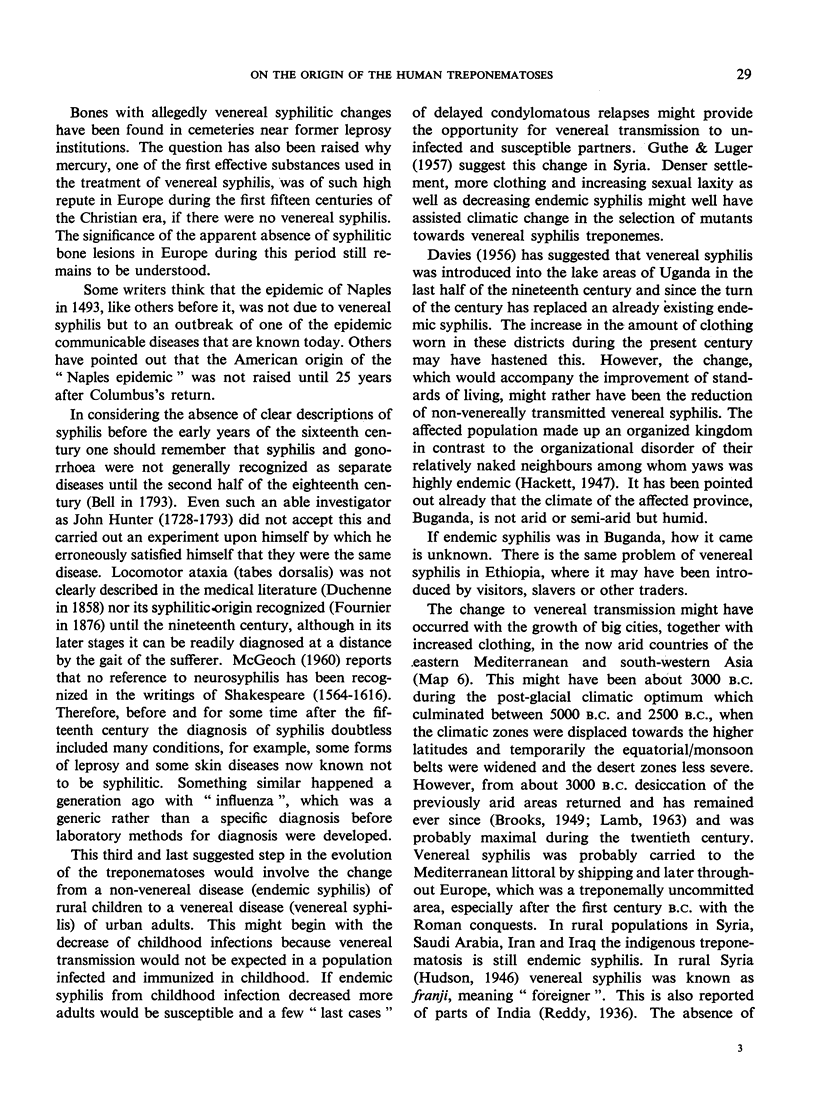












Selected References
These references are in PubMed. This may not be the complete list of references from this article.
- AKRAWI F. Is bejel syphilis? Br J Vener Dis. 1949 Sep;25(3):115–123. doi: 10.1136/sti.25.3.115. [DOI] [PMC free article] [PubMed] [Google Scholar]
- ALLEN R. D. Amoeboid movement. Sci Am. 1962 Feb;206:112–122. doi: 10.1038/scientificamerican0262-112. [DOI] [PubMed] [Google Scholar]
- BARNARD C. C. Yaws and flies; past and present opinions on the rôle of flies in the transmission of framboesia tropica. J Trop Med Hyg. 1952 May;55(5):100–contd. [PubMed] [Google Scholar]
- BECHELLI L. M. Simpósio sôbre a epidemiologia e a profilaxia da lepra (1933-1953). Rev Bras Leprol. 1954 Sep-Dec;22(3-4):157–230. [PubMed] [Google Scholar]
- BOTREAU-ROUSSEL P. [Discussion on the primary lesion of pian]. Bull Soc Pathol Exot Filiales. 1962 Mar-Apr;55:228–229. [PubMed] [Google Scholar]
- COLE H. N., HARKIN J. C., KRAUS B. S., MORITZ A. R. Pre-Columbian osseous syphilis; skeletal remains found at Kinishba and Vandal Cave, Arizona, with some comments on pertinent literature. AMA Arch Derm. 1955 Feb;71(2):231–238. doi: 10.1001/archderm.1955.01540260089019. [DOI] [PubMed] [Google Scholar]
- COOK C. E. The native in relation to the public health. Med J Aust. 1949 Apr 30;1(18):569–571. doi: 10.5694/j.1326-5377.1949.tb67844.x. [DOI] [PubMed] [Google Scholar]
- EDMUNDSON W. F., RICO A. L., OLANSKY S. A study of pinta in the Tepalcatepec Basin, Michoacan, Mexico. II. Mass survey considerations. Am J Syph Gonorrhea Vener Dis. 1953 May;37(3):207–212. [PubMed] [Google Scholar]
- EISENBERG H., PLOTKE F., BAKER A. H. Asexual syphilis in children. J Vener Dis Inf. 1949 Jan;30(1):7–11. [PubMed] [Google Scholar]
- FENNER F. The significance of the incubation period in infectious diseases. Med J Aust. 1950 Dec 2;2(23):813–818. doi: 10.5694/j.1326-5377.1950.tb106945.x. [DOI] [PubMed] [Google Scholar]
- FESTENSTEIN H., BOKKENHEUSER V. Attempted induction of immunological tolerance in rabbits using living Treponema pallidum. Br J Exp Pathol. 1961 Apr;42:158–165. [PMC free article] [PubMed] [Google Scholar]
- GRIN E. I. Endemic treponematoses in the Sudan. A report on a survey. Bull World Health Organ. 1961;24:229–238. [PMC free article] [PubMed] [Google Scholar]
- GUTHE T., LUGER A. Epidemiological aspects of non-veneral endemic syphilis. Dermatologica. 1957 Sep;115(3):248–272. doi: 10.1159/000256011. [DOI] [PubMed] [Google Scholar]
- HACKETT C. J. Epidemiology of receding yaws. J Trop Med Hyg. 1959 Jul;62(7):153–157. [PubMed] [Google Scholar]
- HACKETT C. J. Extent and nature of the yaws problem in Africa. Bull World Health Organ. 1953;8(1-3):129–210. [PMC free article] [PubMed] [Google Scholar]
- HACKETT C. J., GUTHE T. Some important aspects of yaws eradication. Bull World Health Organ. 1956;15(6):869–896. [PMC free article] [PubMed] [Google Scholar]
- HACKETT C. J. Some epidemiological aspects of yaws eradication. Bull World Health Organ. 1960;23:739–761. [PMC free article] [PubMed] [Google Scholar]
- HACKETT C. J. The transmission of yaws in nature. J Trop Med Hyg. 1957 Jul;60(7):159–168. [PubMed] [Google Scholar]
- HACKETT C. L. Incidence of yaws and of venereal diseases in Lango (Uganda). Br Med J. 1947 Jan 18;1(4489):88–90. doi: 10.1136/bmj.1.4489.88. [DOI] [PMC free article] [PubMed] [Google Scholar]
- HARRISON L. W. The origin of syphilis. Br J Vener Dis. 1959 Mar;35(1):1–7. [PMC free article] [PubMed] [Google Scholar]
- HASSELMANN C. M. Comparative studies on the histo-pathology of syphilis, yaws, and pinta. Br J Vener Dis. 1957 Mar;33(1):5–12. doi: 10.1136/sti.33.1.5. [DOI] [PMC free article] [PubMed] [Google Scholar]
- HILL M., MUGGE R. Syphilis prevalence as related to social factors in a Negro subcommunity. Am J Syph Gonorrhea Vener Dis. 1954 Nov;38(6):583–592. [PubMed] [Google Scholar]
- LUGER A. Endemische Syphilis in Syrien. Dermatol Wochenschr. 1958 Jan 11;137(2):25–45. [PubMed] [Google Scholar]
- LUGER A., SCHMID E. E. [Immunity of the central nervous system in endemic syphilis]. Dermatol Wochenschr. 1961 Jun 17;143:617–637. [PubMed] [Google Scholar]
- LWOFF A. Factors influencing the evolution of viral diseases at the cellular level and in the organism. Bacteriol Rev. 1959 Sep;23(3):109–124. doi: 10.1128/br.23.3.109-124.1959. [DOI] [PMC free article] [PubMed] [Google Scholar]
- MARQUEZ F., REIN C. R., ARIAS O. Mal del pinto in Mexico. Bull World Health Organ. 1955;13(2):299–322. [PMC free article] [PubMed] [Google Scholar]
- MARSHALL I. D. The influence of ambient temperature on the course of myxomatosis in rabbits. J Hyg (Lond) 1959 Dec;57:484–497. doi: 10.1017/s0022172400020325. [DOI] [PMC free article] [PubMed] [Google Scholar]
- MCELLIGOTT G. L. Venereal disease and the public health. Br J Vener Dis. 1960 Dec;36:207–215. doi: 10.1136/sti.36.4.207. [DOI] [PMC free article] [PubMed] [Google Scholar]
- MEDINA R. [Evolutive serological responses in patients with buba]. Arch Venez Med Trop Parasitol Med. 1959 Jul;3:290–297. [PubMed] [Google Scholar]
- MURRAY J. F., MERRIWEATHER A. M., FREEDMAN M. L. Endemic syphilis in the Bakwena Reserve of the Bechuanaland protectorate: a report on mass examination and treatment. Bull World Health Organ. 1956;15(6):975–1039. [PMC free article] [PubMed] [Google Scholar]
- OLANSKY S., PRICE I. N. O. The modern diagnosis of syphilis. Bull World Health Organ. 1956;14(2):249–262. [PMC free article] [PubMed] [Google Scholar]
- PLATT B. S. Malnutrition and the pathogenesis of disease. Trans R Soc Trop Med Hyg. 1958 May;52(3):189–216. doi: 10.1016/0035-9203(58)90078-6. [DOI] [PubMed] [Google Scholar]
- POLLOCK J. S. Sibbens or sivvens, the Scottish yaws. Trans R Soc Trop Med Hyg. 1953 Sep;47(5):431–436. doi: 10.1016/s0035-9203(53)80028-3. [DOI] [PubMed] [Google Scholar]
- ROWLING J. T. Pathological changes in mummies. Proc R Soc Med. 1961 May;54:409–415. doi: 10.1177/003591576105400515. [DOI] [PMC free article] [PubMed] [Google Scholar]
- SAX S. The introduction of syphilis into the Bantu peoples of South Africa. S Afr Med J. 1952 Dec 27;26(52):1037–1039. [PubMed] [Google Scholar]
- SENECAL J., AUBRY L., FALADE S. Infectious diseases in the child of pre-school age in Senegal. West Afr Med J. 1962 Jun;11:93–105. [PubMed] [Google Scholar]
- SILVERSTEIN A. M. Congenital syphilis and the timing of immunogenesis in the human foetus. Nature. 1962 Apr 14;194:196–197. doi: 10.1038/194196a0. [DOI] [PubMed] [Google Scholar]
- STEWART T. D., SPOEHR A. Evidence on the paleopathology of yaws. Bull Hist Med. 1952 Nov-Dec;26(6):538–553. [PubMed] [Google Scholar]
- SWAIN R. H. Electron microscopic studies of the morphology of pathogenic spirochaetes. J Pathol Bacteriol. 1955 Jan-Apr;69(1-2):117–128. doi: 10.1002/path.1700690117. [DOI] [PubMed] [Google Scholar]
- TAYLOR W. N. Endemic syphilis in a South African coloured community. S Afr Med J. 1954 Feb 27;28(9):176–178. [PubMed] [Google Scholar]
- WILLCOX R. R. Evolutionary cycle of the treponematoses. Br J Vener Dis. 1960 Jun;36:78–91. doi: 10.1136/sti.36.2.78. [DOI] [PMC free article] [PubMed] [Google Scholar]


